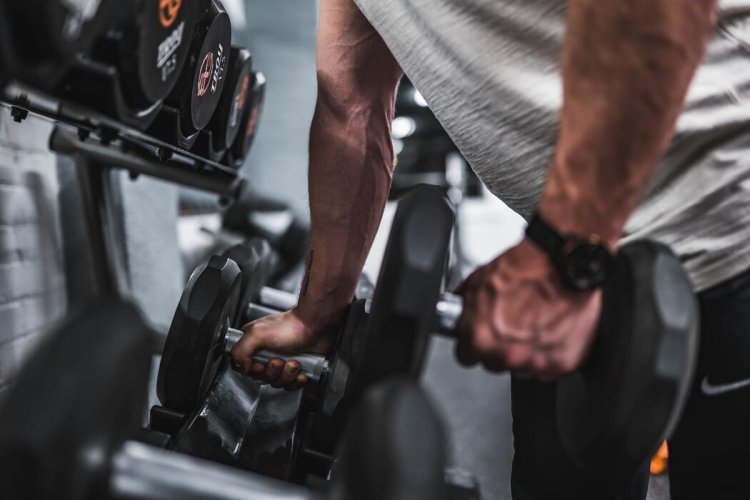
Muscle training is indispensable for improving athletic performance and achieving the firm body that one longs for. It has a positive impact not only on the physical aspect but also on the mental aspect, and is attracting more and more attention from people who want to lead a healthy lifestyle. In order to get the most out of muscle training, it is important to understand the proper frequency and the correct way to do it. In this article, we will focus on the “frequency of muscle training” and introduce it along with other knowledge.
CONTENTS
Suponsered by
Should I do strength training every day?
You may be tempted to train every day to get results quickly, but this is counterproductive. This is because muscle rest is important for muscle hypertrophy. It is said that muscle fibers are damaged by training, and that “super-recovery,” in which muscle fibers are reborn as thicker and stronger muscles, occurs as they heal. Therefore, a trainee must place the same importance on diet and rest as he or she does on muscle training. Many people use muscle soreness, which occurs when muscle fibers are damaged, as a measure of muscle training results, but please be assured that even if muscle soreness does not occur, there is no problem as long as the load is applied properly.
If you’re going to do strength training every day, it’s only right to vary the areas you work out!
Many intermediate level muscle trainers train more than 5 days a week, but this is because they train a different part of their body every day. It is a good idea to try this when you get used to muscle training.
What is the recommended frequency of muscle training for beginners?
Here, we will introduce training frequencies suitable for beginners. The frequency depends on what you want to gain through muscle training.
Beginners recommend frequency of muscle training ” If you want to get a good workout, once a week is OK “.
If you are not in the habit of exercising on a regular basis and would like to start incorporating exercise into your life, why not start with once a week? If you are aiming for muscle hypertrophy, one muscle training session per week is not enough, but for the purpose of eliminating lack of exercise, one session per week is sufficient. If you are aiming for a macho body, it will take several months to several years, so we recommend gradually increasing the frequency from a reasonable once-a-week pace. Incidentally, if you want to do muscle training once a week, weight training will be fine. If you are not the type of person who is motivated by going to the gym, you can get enough load from training with your own body weight, so why not try training at home or in the park to reduce expenses? Buying protein for what you don’t spend on gym fees is also effective for bodybuilding.
Beginners recommended frequency of muscle training: “If you want to get bigger, 3 or more times a week is best.”
If you want to increase the effect of muscle hypertrophy, it is said to be effective to train the same area at least twice a week. Smaller muscles such as biceps, shoulder deltoids, and abdominal muscles recover more quickly, and some data suggests that doing them three times a week is even more effective. Of course, increasing the frequency all at once when you are not used to muscle training can lead to joint injuries and mental fatigue, so it is important to increase the frequency while watching your body’s response without rushing. Especially recommended for beginners is to train the whole body 2~3 times a week with 1~2 days between each workout. 1~2 workouts for the large muscles of the chest, legs, and back, and 1 workout for the small muscles of the arms, shoulders, and abdominal muscles are recommended.
If you want more muscle hypertrophy, incorporate the split method!
It is recommended to do the full-body method for a few weeks to a few months, and then incorporate the split method when you become accustomed to muscle training. There are many different types of segmentation methods, such as upper and lower body, pull and push, and antagonist muscles such as chest and biceps, back and triceps, and so on. The advantage of this method is that, unlike the full-body method, it is easier to feel the pump in one area and to avoid getting stuck in a rut by performing a greater number of exercises. Of course, even with the split method, you want to do the same area twice a week, so if you cannot do muscle training more than four times a week, it is advisable to limit yourself to a maximum of two splits.
2/3GO TO NEXT PAGE





![What are the specific 5 changes that muscle training can bring to a man? [“The truth as experienced by practitioners.”]](https://otokomaeken.com/wp-content/uploads/2023/12/3ecb709c1f1613850249ba743b4b1457-630x331.jpg)


























![6 self-weight menus for leg training! Effective training for toning the lower body [ supervised by a professional ].](https://otokomaeken.com/wp-content/uploads/2023/03/2232-115x60.jpg)